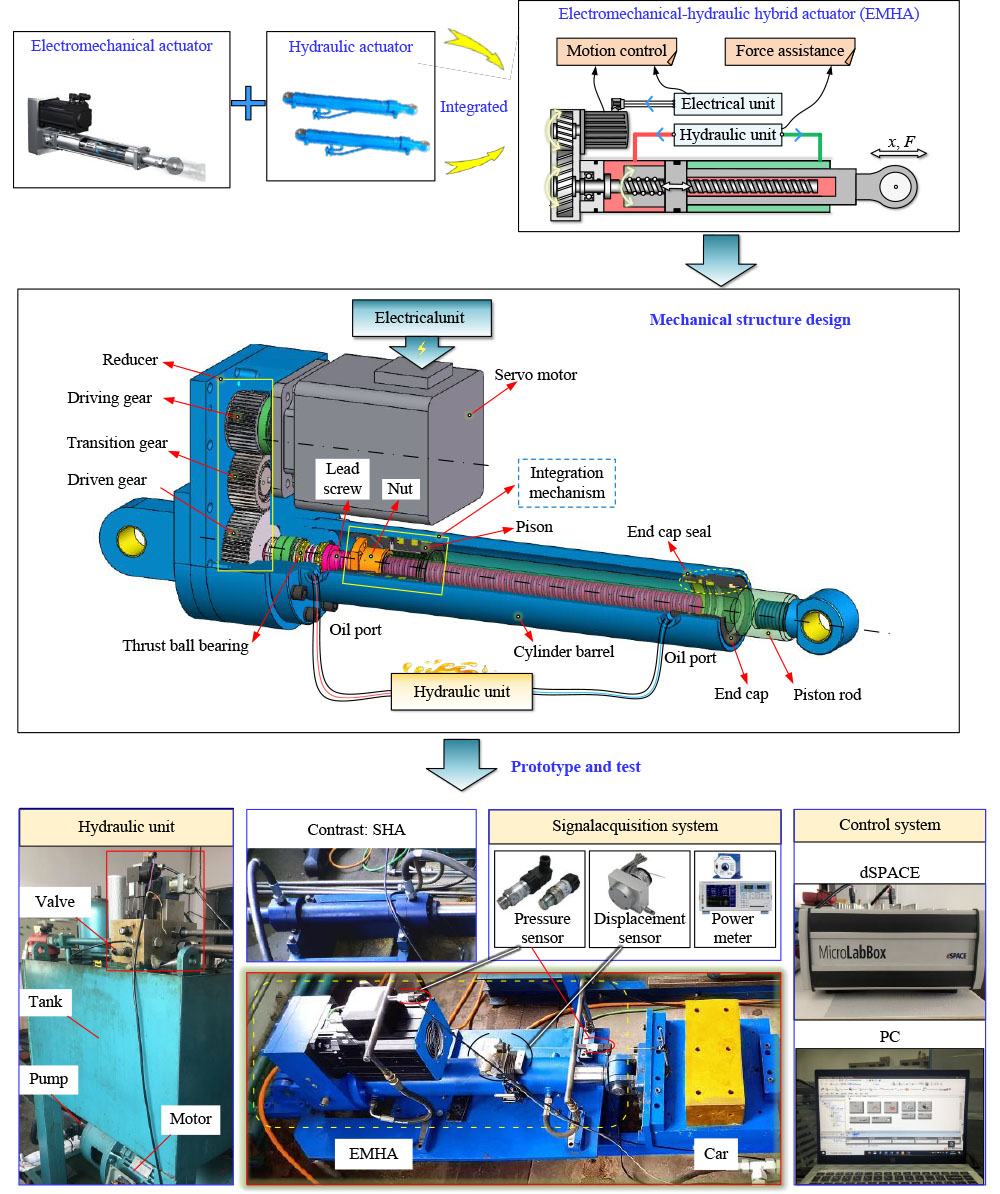An electromechanical actuator (EMA), which transmits power through a rigid mechanical structure, can easily realize the accurate control of velocity, position, and force [
23]. Compared with SHA, EMA eliminates throttling loss, and the electric energy is directly converted into mechanical energy. The energy conversion link is the least, and the energy efficiency is high [
24]. EMAs are currently considered an alternative to conventional hydraulic cylinders in many industrial applications, including the aeronautic sector, because of their high efficiency and relatively simple commandability. EMA has been successfully adopted to drive the landing gear, brake, and spoiler of Boeing 787, the slat and horizontal stabilizer of Airbus A380 [
25,
26], and the legs of mobile robots [
27]. The research of EMA mainly focuses on structural optimization and application. Caracciolo and Richiedei [
28] proposed a model-based structural parameter design method of EMA, minimizing the installed power by matching the parameters of the motor and ball screw. Elduque et al. [
29] reduced energy consumption by 15% by optimizing the process of the electric injection molding machine. However, the power density and bearing capacity of EMA are small. Thus, directly applying EMA in mechanical equipment to drive heavy-duty mechanisms is challenging. Therefore, Quan et al. [
30,
31] proposed an electrohydraulic hybrid drive system in which the EMA and hydraulic cylinders are arranged in parallel to drive the manipulator jointly. Compared with the traditional SHA system, the electrohydraulic hybrid drive system exhibits an energy consumption reduced by 51% and possesses excellent control characteristics.



















